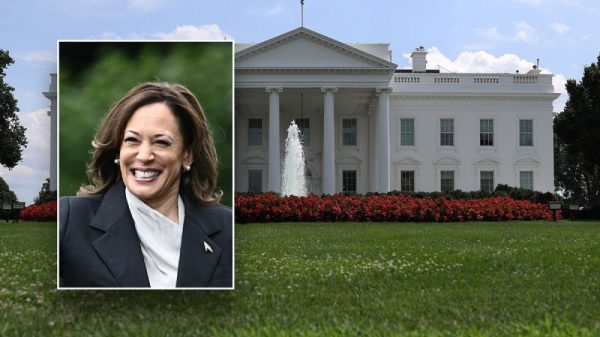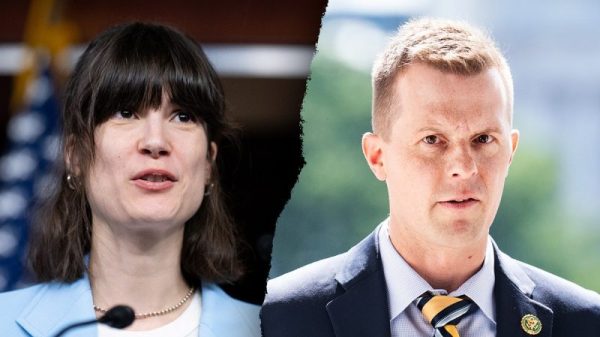The Biden administration proposed a new rule Friday seeking to bolster protections for federal workers, an explicit attempt to thwart plans by former president Donald Trump and his allies to replace career government officials with political loyalists should he be reelected.
The rule seeks to halt any attempt to gut the foundation of the federal civil service, whose 2.2 million career employees serve any occupant of the White House without regard to partisanship — and have rights to due process at every level.
In the waning days of his administration, Trump tried to subvert those principles with a sweeping executive order that stripped job protections from employees in policy roles across the government. President Biden revoked that executive order on the third day of his presidency, and the new rule Friday seeks to further protect those officials. The rule comes as Trump continues to dominate the Republican primary field and appears likely to once again capture his party’s nomination for president.
Jason Miller, the deputy director for management at the Office of Management and Budget, said the administration’s rule seeks to “address the vulnerabilities that others have tried to exploit.”
“The reason we put a nonpartisan civil service in place 140 years ago was so that the American people could trust that their government worked for them, irrespective of which party was in power,” he said in an interview. “This action is about strengthening that foundation so that the people doing the work on behalf of the federal government from administration to administration are dedicated, are capable and are nonpartisan.”
The Trump directive, known as Schedule F, allowed his administration to weed out thousands of career federal employees viewed as disloyal by changing their status to at-will workers who could be fired without due process. The executive order was the product of a four-year campaign by conservatives to bring to heel what they called a “deep state” of bureaucrats who were resistant to the policies of the Trump White House.
The idea was to hold federal employees accountable by sidelining their labor unions and giving the president more power to hire and fire them, much like the roughly 4,000 political appointees who typically change with each new administration in Washington.
Schedule F amounted to the most significant assault on the nonpartisan civil service in its history. Civil service experts and union leaders assailed it as an effort to impose political loyalty tests on a nonpartisan workforce, but Trump allies said it was the workforce that had shown partisanship by defying his policies in key areas of the government.
The administration ran out of time to implement the new policy, though it determined that most of the workforce at the Office of Management and Budget would be reclassified under the newly created class of employees who would lack most job protections. The policy was never tested in court.
Though Biden rescinded the Trump order, jittery Democrats sought a more permanent firewall against a future effort by a Republican White House to revive it. Democratic-sponsored legislation with the rough contours of Friday’s proposed regulation cleared the House last year but not the Senate.
The proposed regulation issued Friday by the Office of Personnel Management in the Federal Register would allow employees to keep their existing job protections and right to due process that is a hallmark of federal employment, including the right to appeal a firing or reassignment — even if their positions were reclassified. The regulation also tightens the definition of roles that are able to be exempt from civil service protections, limited to political appointees. It effectively says that the categories of jobs targeted by the Trump order are career appointees, not political ones, and thus cannot be considered “at will.”
“We’re doing this because the president believes that government should work for people,” Miller said. “It should work for people and having capable talent in the federal government means that Americans get the services, get the security, get the economy, get the public health and health care that they expect from their federal government.”
But Trump officials argued that career employees in the federal government resisted implementing policies during his presidency, and they have signaled that Trump would go further to strip protections for those workers should he be reelected.
“Congress should return to the original vision for the civil service and make all federal employees at-will,” James Sherk, a former Trump White House official who devised the Schedule F plan and now works at the Trump-aligned America First Policy Institute, wrote in a report about the federal bureaucracy. “Removal protections shield career bureaucrats from accountability for how they exercise federal power. Government of, by, and for the people should not operate this way.”
Sherk said a reimplemented Schedule F rule would be a priority for any incoming Republican administration. “What we were doing is saying, ‘We can fire you if you pursue your own agenda or are bad at your job.’” He said the Biden administration, with its plan to preempt a new effort, is “trying to slow down the reissuance of Schedule F” because reversing a federal regulation is a lengthy process that requires public comment and response.
It is not just Trump who has called for major changes to the federal workforce. In August, Florida Gov. Ron DeSantis (R), who is also running for president, pledged at an event in New Hampshire to “start slitting throats” in the bureaucracy, rhetoric that was denounced by unions that represent federal workers. GOP presidential candidate Vivek Ramaswamy said in a policy speech this week that he would fire more than 75 percent of the federal workforce and shut down entire agencies, among them the Department of Education, the FBI and the Nuclear Regulatory Commission.
Biden administration officials said they recognized their new rule, if implemented, could be rolled back by a future administration or challenged in the courts. But they said the new rule is only one component of a broader agenda to strengthen the federal workforce and argued the rule is consistent with the law.
“I think this one is right down the middle, consistent with what has been in practice for 140 years,” Miller said. “We have full confidence in the validity of this regulation.”
Meryl Kornfield contributed to this report.






































